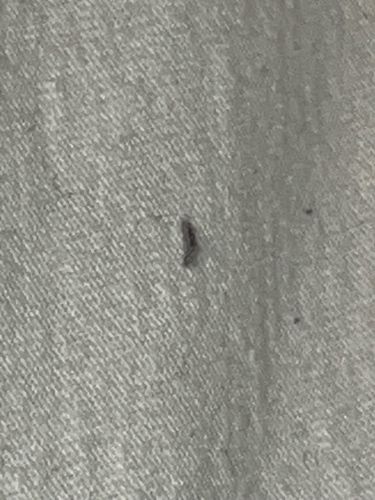Case-bearing Clothes Moth
Scientific Name: Tinea pellionella
Order & Family: Lepidoptera, Tineidae
Size: Larvae can be up to 10-15 mm long. Adult moths have a wingspan of 10-15 mm.

Natural Habitat
Indoors, particularly in closets, attics, storage areas, and rarely used rooms where natural fibers are stored or present. They thrive in dark, humid environments.
Diet & Feeding
The larvae feed on materials of animal origin, including wool, fur, feathers, hair, felt, and sometimes synthetic fibers if mixed with these. They are known to infest clothing, carpets, upholstered furniture, and natural fiber insulation.
Behavior Patterns
Case-bearing clothes moth larvae spin silken cases that they carry with them as they feed and move. They are often found in dark, undisturbed areas. Adults are poor fliers and tend to run or hop. The larvae move slowly and can cause significant damage to fabrics.
Risks & Benefits
Potential risks include significant damage to textiles and other items made from animal fibers, leading to economic loss. They pose no direct health risk to humans. There are no known significant benefits from this insect.
Identified on: 8/31/2025